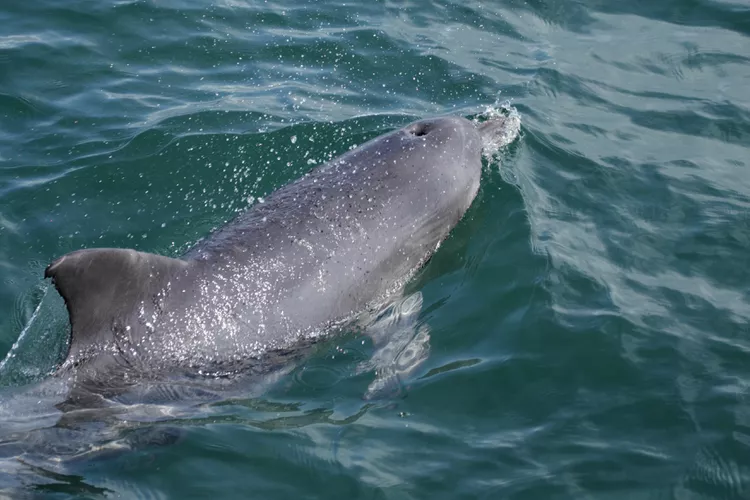The city offers visitors numerous ways to see the pink dolphin, one of Hong Kong’s mascots. Numerous tours allow for the observation of this creature in its natural habitat in the nearby South China seas.
Technically, the pink dolphin is known as the Chinese White Dolphin. This species earns its name from the distinctive pink spots on its skin and has become a beloved mascot of the city due to its significant populations near Hong Kong.
Although there is no definitive scientific reason for the dolphin’s pink hue, it is believed that this coloration results from the animal attempting to regulate its body temperature. Moreover, the absence of natural predators such as sharks in the area may have allowed them to shed their natural grey camouflage over time.

Where to See the Pink Dolphins
The natural habitat of the pink dolphin is the Pearl River estuary, where the largest groups are found around Lantau Island and Peng Chau. For an up-close encounter, consider Dolphinwatch, a quasi-environmental tour group heralded for its regular boat trips to Lantau, boasting a 96 percent success rate for dolphin sightings. The group operates three trips a week (Wednesday, Friday, and Sunday), and notably, if you do not spot a dolphin during your trip, you are welcome to join the next available trip at no charge.
While the dolphins are indeed a majestic sight, it’s essential to understand that you will not experience a Seaworld-level spectacle from these wild creatures. Due to diminishing numbers and the effects of ecotourism in the area, sightings may be rare and brief. According to recent estimates from the World Wildlife Fund (WWF), there are approximately 1,000 dolphins in the entire Pearl River estuary.
The tours last roughly three hours, during which you may only catch brief glimpses of the dolphins. Nevertheless, this experience remains worthwhile due to the breathtaking natural and manmade landscapes surrounding Hong Kong and the Pearl River estuary. Remember to bring a camera and choose a day with clear skies to maximize your time on the water.
The Harmful Impact of Tours on Pink Dolphins
Several critical factors contribute to the alarming decline of the pink dolphin, including habitat loss mostly attributed to the Hong Kong Airport development, pollution in the Pearl River Delta, and extensive shipping activity near Hong Kong. However, the tours themselves pose challenges for dolphin populations as well.
The WWF Hong Kong does not endorse Dolphinwatch or any other tours aimed at viewing pink dolphins. In contrast, Dolphinwatch insists that it adheres to best practices to minimize its ecological impact on the dolphins’ habitat, arguing that their tours represent only a small fraction of the shipping activity in the area.
Dolphinwatch also claims that the awareness it raises regarding the plight of pink dolphins (inclusive of a lecture during every tour) helps to counterbalance any negative effects associated with its tours. Additionally, the organization donates a portion of the proceeds from the tours to Friends of the Earth and actively advocates for the conservation of pink dolphins. For those wishing to see dolphins while supporting the environment, Dolphinwatch offers one of the most eco-friendly tour options available.





